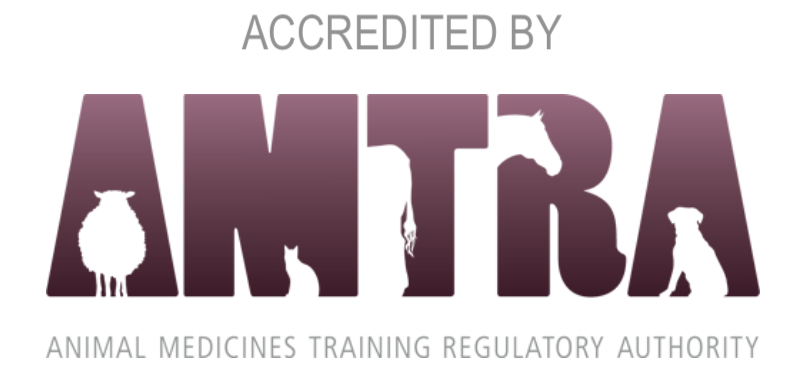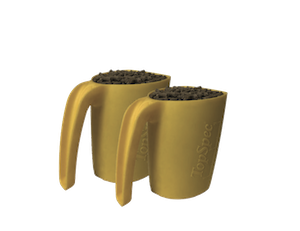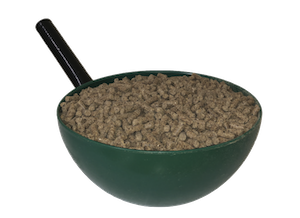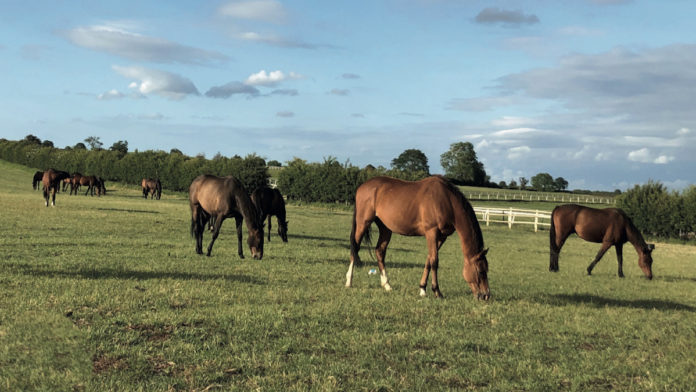Getting the best from feed balancers

By Anna Welch BVSc, BSc, MRCVS. Veterinary Nutrition Director, TopSpec
RAMAs/SQPs who read this feature and submit correct answers to the questions below will receive two CPD points. For more about AMTRA and becoming a RAMA/SQP, visit www.amtra.org.uk
There is no doubt that the use of an appropriate feed balancer will be beneficial to most horses and ponies, in many different situations. Consequently, feed balancers are widely recommended by nutritionists, vets, researchers and other professionals.
When a feed balancer is used correctly, the results speak for themselves, which also leads to many recommendations being made by word of mouth between horse owners.
Reputable feed companies offer support from experienced nutritionists and sales representatives; you will also be a valued advisor to many of your customers. Therefore, it is helpful for you to have a good knowledge of the products you are selling and how to get the best from them.
THE BEST WAY TO FEED
An important starting point for getting the best from any horse feed is to have an understanding of the horse’s digestive system. Feeding ad-lib suitable forage, and as little hard feed as is necessary, will help to keep a horse’s digestive system healthy and functioning optimally.
It makes sense to maximise access to grazing when it is available, as it is the best value forage source. However, grass quality is low at this time of year compared to spring, and conserved forage (hay/haylage) will usually be necessary.

An example of the amount of feed balancer needed per day, for a 600kg horse

The maximum meal size for a 500kg horse is 2kg, which equates to approximately one level Stubbs
scoop of a cubed product
Offering the best quality conserved forage an owner can buy will help to minimise the amount of hard feed needed for maintenance, work and condition. However, hay with a lower nutritional value (e.g. late-cut meadow hay) may be necessary for a horse that is prone to ‘fizzy’ behaviour or if they need a low-sugar/ starch regime for other reasons.
Even when feed requirements may be high, e.g. for hard- working horses and/or during winter, it is important that a horse’s meal size does not become too large. The maximum amount that should be offered in any one feed is 400g per 100kg ideal bodyweight, meaning that a 500kg horse should usually receive no more than 2kg (as fed). As an example, one level Stubbs Scoop holds approximately 2kg of a cubed product.
Feeding in sympathy with the horse’s digestive system, by offering plenty of forage and avoiding large (particularly high- starch) feeds will increase its efficiency. This not only helps to avoid wasting money spent on feed but can reduce the risk of several problems including gastric ulcers, loose droppings, colic, laminitis, ‘fizzy’ behaviour, DOD, ‘tying-up’ and stereotypical behaviour.
WHAT MAKES A GOOD FEED BALANCER?
The best feed balancers can be judged by the quality of the raw materials used and the expertise with which they have been formulated. This will be reflected in the health, welfare and performance of the horses and ponies that they are fed to.
A feed balancer is an exceptionally concentrated horse feed which supplies protein (amino acids), vitamins, minerals, trace elements, yeast products and other micronutrients. Feed balancers are designed to balance forage, and other un-supplemented or poorly-supplemented feed, whilst keeping meal sizes small.
There is an array of different products available claiming to function as a ‘feed balancer,’ so it can lead to confusion for your customers. Some are only ‘top-dressings’ for compound feed and cannot be fed without them. Others have an incredibly low feeding rate and therefore supply an insignificant amount of protein; these products are nearer to a supplement than a feed balancer.
Even some yeast-based supplements are termed a ‘balancer’ because of the role that they play in balancing the microflora in the horse’s hindgut. However, they do not contain vitamins and minerals or balance the diet for protein, and therefore, should not be considered true feed balancers.
A top specification feed balancer is one that combines the benefits of balancing the horse’s diet superbly with respect to protein, vitamins, minerals and trace elements, with the advantages of optimising the balance of microflora in the gut. Products like this are truly feed balancers in every sense of the word.

HOW DOES A TOP-SPECIFICATION FEED BALANCER HELP YOUR CUSTOMERS?
One of the benefits of using such a nutrient-dense product is that it allows a horse to eat more forage by decreasing hard feed size.
For horses that require weight gain and/or those that are asked to perform at a high level, a conditioning feed balancer provides the ideal base for their hard feed. You should look beyond the low feeding rate, and limited Digestible Energy (DE) that is supplied as a result, to fully understand why some feed balancers are certainly conditioning.
The role of protein plays an important part in this and is involved in promoting muscle development and topline, as well as many other structures and thousands of functions within the body. Be aware that the percentage of crude protein stated on the feed label or sack does not reflect the ability of the product to promote topline. The quality of the protein (which affects the level of essential amino acids supplied) has a significant impact.
To see the greatest benefits to muscle development and topline, use a feed balancer with a high percentage of protein (approximately 25%) with good quality protein sources high up on its ingredient list. The best vegetable protein source available for horses is soya, followed by linseed. Sunflower is used in some balancers, but the protein quality is poor. Trying to balance the use of poor-quality protein by adding synthetic amino acids is not as effective as using the more expensive high-quality protein ingredients.
For horses that do not require weight gain, a low-calorie or ‘lite’ feed balancer is one of the only ways to ensure they receive a fully balanced diet without promoting condition. Many good doers are unable to consume the recommended level of even a low-calorie compound feed (e.g. cool cubes or pony nuts).
A top specification feed balancer (whether conditioning or non-conditioning) will supply both general purpose and specialised supplements, which can include those for hooves, coat, skin, bone, muscle, blood, joints, the immune-system and the digestive system. The use of one fully balanced product (rather than multiple separate supplements) avoids unbalanced or over- supplementation, and provides excellent value for money.
I would encourage your customers to look at their total feed costs over several months rather than the price per bag of feed. A feed balancer is likely to cost more compared to a sack of compound feed or straights, but by reducing feed requirements and eliminating the need for many additional supplements, there are significant savings to be made.
HOW TO USE A FEED BALANCER
The recommended feeding rate of a feed balancer will vary according to the product used. For many, it is 100g per 100kg ideal bodyweight per day but there are balancers with a higher daily feeding rate, such as those designed for stud/breeding stock.
Like all feeds, balancers should be introduced to a regime gradually, over at least four days. The total amount should be divided between the daily feeds, but it may be possible to feed only once daily (for example, a good doer needing very little additional feed alongside their balancer).
To get the best from a feed balancer, the recommended amount should be given daily. Firstly, to meet the daily requirement for the nutrients supplied and secondly, because consistent feeding helps to promote a healthy digestive system.
HOW TO STORE A FEED BALANCER
Feed balancers should leave their site of manufacture in pristine condition, in packaging that will keep them as fresh as possible up to their Best Before Date (BBD). They should be kept in cool, dry conditions both in store and on the yard. If the product is stored incorrectly i.e. in damp conditions or at a high temperature, it will encourage problems such as mould development.
All feed, including feed balancers, should be stored in their sack rather than tipped out into a bin. The sack should be placed in a vermin-proof, air-tight, cool, dry container (for example, a metal bin with a lid). The sack should be kept airtight; each time the sack is opened the top should be tightly closed, with a heavy object (e.g. a clean brick) put on top before replacing the lid of the container.
All products should be used before their best before date, which will be printed on the white label or sack. You should discourage your customers from purchasing more food than they can store correctly and use within three months. Feed balancers should not be fed after the BBD.
SUMMARY
• Horses have evolved to thrive on a high-fibre diet, so they do best when offered ample forage and only small hard feeds.
• A feed balancer provides the ideal basis for the diet, as it is a very nutrient-dense feed with a low feeding rate.
• Helping customers to select the most appropriate feed balancer, and then feed and store it correctly, will allow the best results to be seen.
• Look to feed balancers with high quality ingredients and appropriate supplementation.
• The ideal regime for your customer’s horse usually works out to be the most cost-effective, particularly when looking at total feed costs over several months.
About the author: TopSpec can be contacted, free of charge, on their BETA Multiple Award-Winning-Helpline Tel: 01845-565030

ETN’s series of CPD features helps RAMAs (Registered Animal Medicines Advisors/SQPs) earn the CPD (continuing professional development) points they need. The features are accredited by AMTRA, and highlight some of the most important subject areas for RAMAs/SQPs specialising in equine and companion animal medicine.
AMTRA is required by the Veterinary Medicines Regulations to ensure its RAMAs/SQPs undertake CPD. All RAMAs/SQPs must earn a certain number of CPD points in a given period of time in order to retain their qualification. RAMAs/SQPs who read this feature and submit correct answers to the questions below will receive two CPD points. For more about AMTRA and becoming a RAMA/SQP, visit www.amtra.org.uk











